| Home > China Feature |
Yuan Dynasty City Wall Relics Park
With a length of 9 kilometers (6.6 miles), the Yuan Dynasty City Wall Relics Park 元大都城垣遗址公园 extends across Haidian and Chaoyang districts from west to east and is the largest linear park in Beijing. The moat dug in the Yuan Dynasty (1271-1368) flows through the park and divides it into two parts connected by six bridges. The north section is the city wall relics protected area and the south section is planted with trees, flowers and grass dotted with sculptures, pavilions and murals. Strolling in the park from west to east, visitors can read a mural displaying poems which praise the beauty of flourishing trees in dim fog under the blue sky in ancient times. In a square, archaized forts and sculptures of horses and ancient coins represent the invulnerability and prosperity of the Yuan Dynasty. A group of human sculptures including Kublai Khan (the founder of Yuan Dynasty) and the famous Italian traveler Marco Polo, illustrates the peak of the dynasty. The Hundred-Bird Garden, the only bird sanctuary in Beijing, is in this park. More than 2,500 birds such as black swans, ostriches, red-crowned cranes and green peafowls are bred in the garden. At the east end of the park is the largest marsh in the urban area of Beijing. The marsh, overgrown with carpets of water lily, bulrush and flagleaf, provides a wonderland to escape from the bustling city life. Every year, the Chinese Flowering Crabapple Festival, which is held in the park in April, lures thousands of visitors to enjoy the spectacle of more than 2,000 flowering Chinese crabapple trees. Body-building equipment, a bar street and wash rooms provide convenience for visitors. Admission Fee: Free 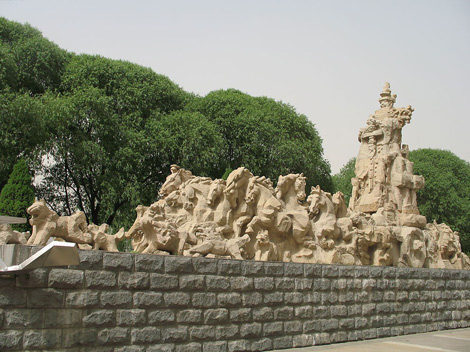
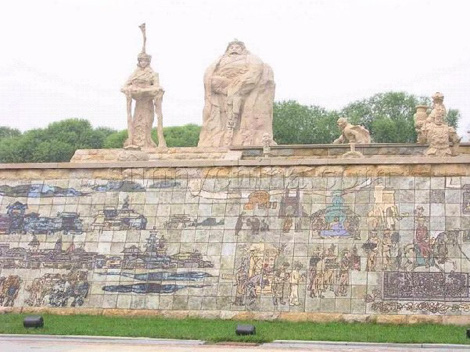 As its name suggests, this park was built on the city wall relics of the Yuan Dynasty (1271-1368). The original city wall was 600 meters (656 yards) long constructed of rammed-earth in which poles and crossbars were used to reinforce it. The east and west walls were built where the inner city wall of Beijing is located. The south wall spanned from east to west today's Chang'an Street while the north wall was 5 kilometers (3.1 miles) from the Anding Gate (Andingmen). Visitors can find the city wall relics in the Yuan Dynasty City Wall Relics Park in Haidian District. In addition, the whole park shows the prosperous Yuan Dynasty through murals and sculptures.
As its name suggests, this park was built on the city wall relics of the Yuan Dynasty (1271-1368). The original city wall was 600 meters (656 yards) long constructed of rammed-earth in which poles and crossbars were used to reinforce it. The east and west walls were built where the inner city wall of Beijing is located. The south wall spanned from east to west today's Chang'an Street while the north wall was 5 kilometers (3.1 miles) from the Anding Gate (Andingmen). Visitors can find the city wall relics in the Yuan Dynasty City Wall Relics Park in Haidian District. In addition, the whole park shows the prosperous Yuan Dynasty through murals and sculptures.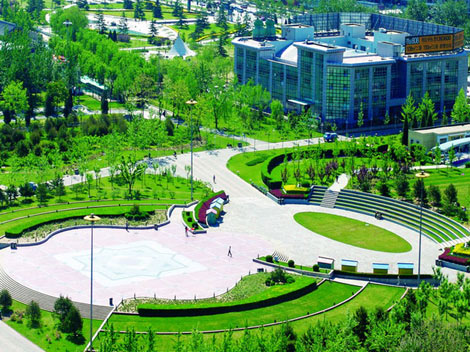
Bus Route: 104, 108, 117, 124, 426, 644, 758, 850, 858 to Wuluju (五路居), then you could walk to the Yuan Dynasty City Wall Relics Park (元大都城垣遗址公园).
Art
 more
moreSculpture in Qianling Mausoleum
The sculpture of Qianling Mausoleum is the main relic of the ground ...
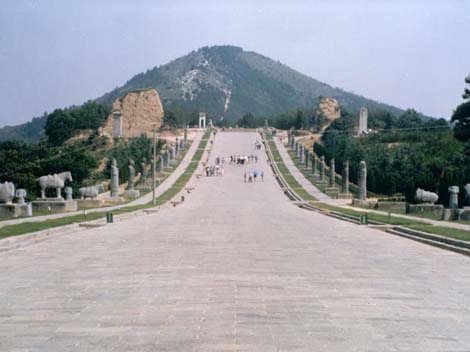
A Sweet Art:Sugar Painting
In and around China’s southwestern Sichuan Province, it is usual to ...

Chinese Treasure Displayed at Sha...
There are four treasures of the Chu Minority Culture displayed at th...
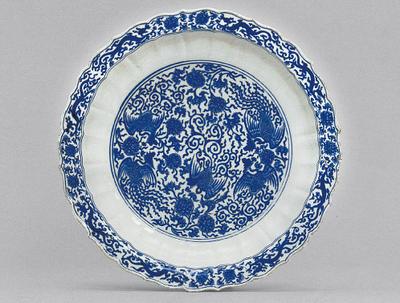
Custom
 more
more




 print
print  email
email  Favorite
Favorite  Transtlate
Transtlate 







